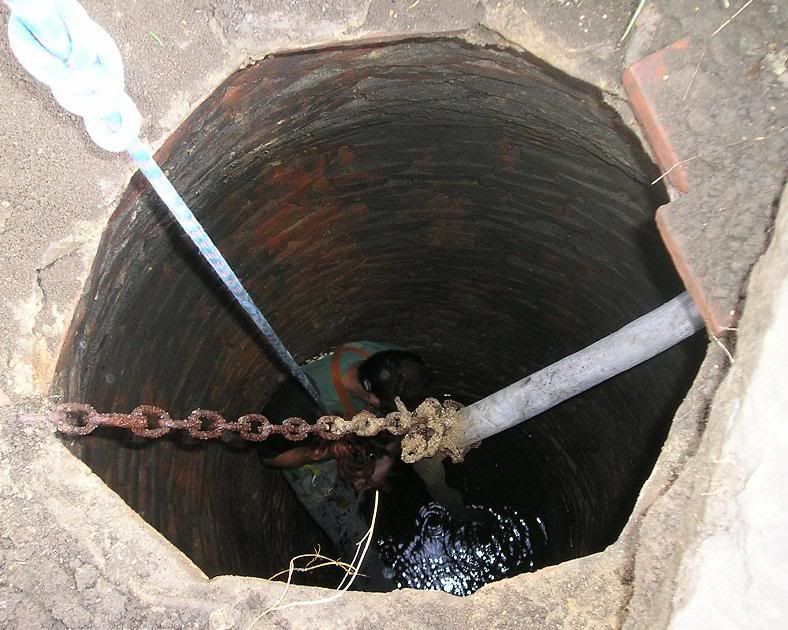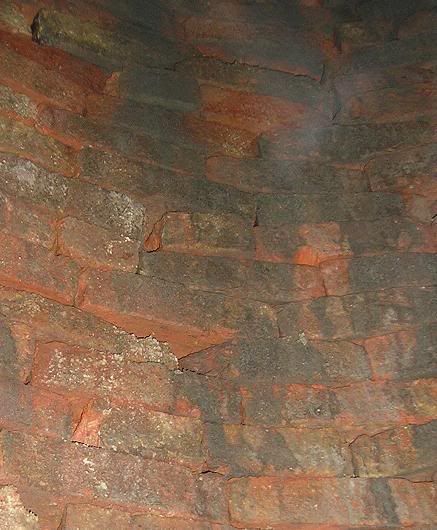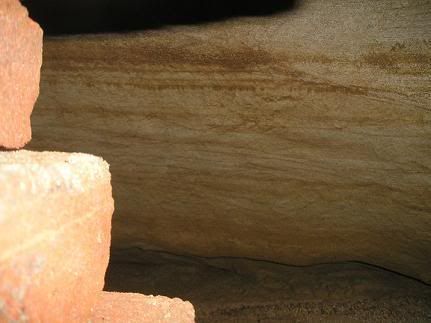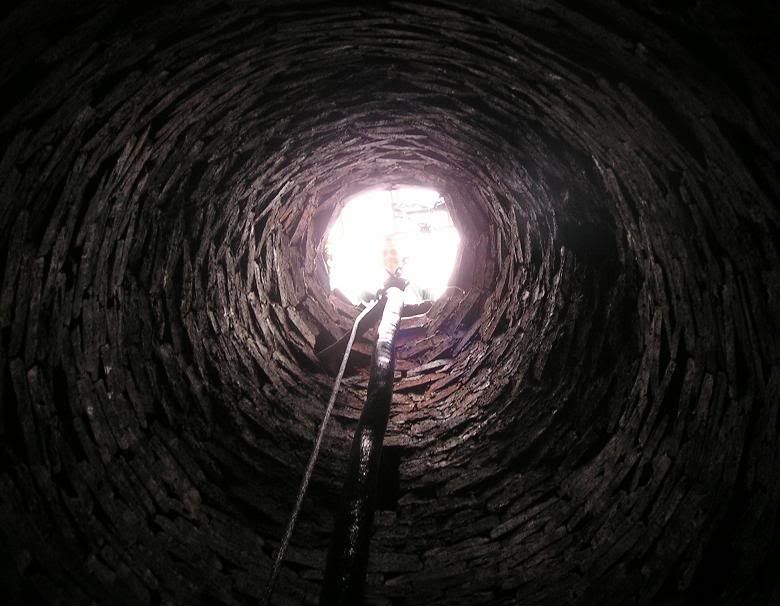DaveBrigg
Member
- Messages
- 908
- Location
- North Lincs
I managed to enlist the help of a brother who is a keen caver last weekend, and explored the well in our garden. Fortunately the water level had dropped about 20 ft from the summer. The top is capped by a slab the size of a gravestone nearly 10 cm thick.

On the right is the lead pipe which was once connected to a pump inside the house. It is held centrally by a chain.

The brickwork at the top is mortared, but as soon as the sides straightened to vertical they were just built with bricks stacked on top of each other.

The well was dug into sand. At the bottom a brick had fallen out to reveal quite a large void behind, created by the sand slowly falling through the gaps in the bricks into the water. Despite this, and the lack of mortar, the sides seemed quite solid.

Looking up, the bell shaped roof can be seen.
If there are any well experts out there, can anyone explain whether the bricks were laid as the shaft was dug, or whether it was possible to dig down without the sides collapsing and then brick upwards?
Also, are there any clues that would help to date the well?

On the right is the lead pipe which was once connected to a pump inside the house. It is held centrally by a chain.

The brickwork at the top is mortared, but as soon as the sides straightened to vertical they were just built with bricks stacked on top of each other.

The well was dug into sand. At the bottom a brick had fallen out to reveal quite a large void behind, created by the sand slowly falling through the gaps in the bricks into the water. Despite this, and the lack of mortar, the sides seemed quite solid.

Looking up, the bell shaped roof can be seen.
If there are any well experts out there, can anyone explain whether the bricks were laid as the shaft was dug, or whether it was possible to dig down without the sides collapsing and then brick upwards?
Also, are there any clues that would help to date the well?
